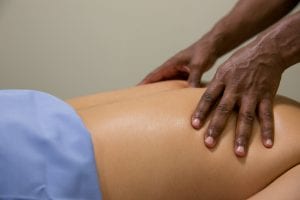Breast cancer currently affects about one in eight women in the United States. In 2009, an estimated 192,370 new cases of invasive breast cancer were expected to be diagnosed in women throughout the U.S. In addition, 62,280 new cases of non-invasive (in situ) breast cancer were diagnosed. Sadly, about 40,170 women in the U.S. were expected to die in 2009 from the disease. The good news is that, as of 2008, about 2.5 million women in the U.S. have survived breast cancer. Women with breast cancer can suffer from depression, anxiety, and stress, which can result in a decreased in natural killer (NK) cells. A drop in NK cell activity has been linked to increased tumor development.
Massage therapy has been shown to offer a number of benefits for breast cancer patients. Performed by a skilled and qualified therapist, the immediate benefits of massage therapy for breast cancer patients include reduced stress and anxiety. Long-term massage effects include reduced depression and hostility and increased urinary dopamine, serotonin values, NK cell number, and lymphocytes. Massage can also enhance one’s feeling of well-being. It can stimulate the nerve endings in the skin, release endorphins (the feel good hormone) and inhibit the stress hormones, cortisol and adrenaline.
Research Studies Supporting Massage Therapy for Cancer Patients
In a study published in the Journal of Psychosomatic Research, the Touch Research Institute found that massage therapy reduced anxiety and depression. It also improved immune function, including increased NK cell number in breast cancer patients. Additionally, breast cancer patients have improved immune functions following massage therapy.
Another study* found that therapeutic massage reduced cancer pain perception by an average of 60 percent, decreased anxiety by 24 percent and enhanced relaxation by 58 percent. A Touch Research Institute study involving 20 children with leukemia found that daily massages by their parents increased the children’s white blood cell and neutrophil counts (neutrophils form a primary defense against bacterial infection).
Are you interested in becoming a certified massage therapist?
Visit the links below to explore our massage therapy programs at a campus near you:
One 2003 study of 230 cancer patients found that those who received one 45-minute therapeutic massage session per week for a month felt less pain and took about eight fewer doses of pain medication than those in the control group.
Specific Techniques and Considerations in Massage Therapy for Cancer Patients
Massage therapy is usually administered by a therapist using fingers and hands to manipulate the soft tissues of the body–muscles, skin and tendons. Administered by a trained professional, massage therapy is generally safe and has no negative side effects. Effective massage therapies include stroking, squeezing and stretching techniques on the head, arms, legs, feet and back.
During chemotherapy treatment, blood count for platelets and/or white blood cells may drop below normal levels. Also, during radiation treatment, the skin develops minor burns. A qualified massage therapist must be familiar with these treatment side effects before proceeding with massage.
Before attempting massage therapy, first consult a primary care physician. If he or she advises that massage may help, find a licensed massage therapist who is nationally certified through the National Certification Board for Therapeutic Massage & Bodywork (www.ncbtmb.org) or the American Massage Therapy Association (www.amtamassage.org). Note: Medicare and most private insurance do not cover massage.
*Ferrel-Torry & Glick (1003)
Featured Posts:

